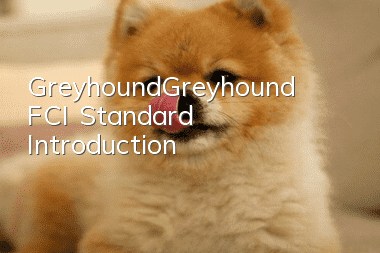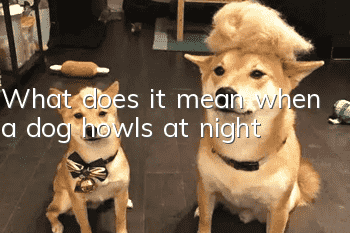Greyhound|Greyhound FCI Standard Introduction

Greyhound, also known as Greyhound, is native to the Middle East and is the fastest dog in the world. Adult dogs are 68-76 cm tall and weigh 27-32 kg. Greyhounds are extremely rare purebred dogs. In the modern world, Australian greyhounds are recognized as the best, and greyhounds from all countries are selected from Australia.
FCI number: 158
FCI category: Group 10: Greyhound group
【Height】
Male Greyhounds are 28.0-29.9 inches (71.0-76.0 cm) tall at the withers, and female Greyhounds are 26.8-28.0 inches (68.0-71.0 cm) tall at the shoulders.
【Weight range】
The male Greyhound weighs 63.9-70.6 pounds (29.0-32.0 kg) and the female Greyhound weighs 59.5-63.9 pounds (27.0-29.0 kg)
【Head (head, face, eyes, ears, nose, mouth, muzzle, jaw, teeth)】
Head: Long, medium width. The forehead is flat. Skull: Thin. Long and narrow, fairly broad between ears, with few depressions, few or no sinuses, muzzle of medium length, strong but not rough. Ears: Small, of good texture, hanging low and closed except when not completely erect when excited. Eyes: Black, bright, intelligent, revealing vitality. Muzzle: The jaw is strong and clear-cut. Jaws/Teeth: The lower jaw is strong and has a perfect scissor bite, meaning the upper teeth closely cover the lower teeth and the lower jaw is square. Teeth are strong and straight.
【Torno (neck, chest, ribs, waist and back, front of body, skin)】
Neck: Long, muscular, slightly arched, gradually broadening to the shoulders. Back: Fairly long, broad and square. Loin: Powerful and arched. Chest: Deep and broad. The ribs are long, elastic and well extended.
【Extremities (forehead, shoulders, upper limbs, pastern joints, pasterns, soles of feet, hindquarters, thighs, hocks, joints and hock nails)】
Forequarters: The forelegs are long, upright, and strong-boned. Elbows, palms and toes turn neither in nor out. Shoulders: Sloping, well set, muscular, but not heavy or narrow. Elbows: Flexible and perfectly connected to the shoulders. Palm: Medium length, slightly elastic. Completely erect, neither turning outward nor inward, and strong. Hindquarters: Long, well-muscled and powerful, broad and naturally grounded, with moderately bent hindquarters at the knees. The hock joints are well bent and close to the groundFace, broad but straighter in front and rear. Thighs: Broad, muscular and powerful. Knee joint: good bending angle. Hock joints: Neither in nor out. Feet: Medium length, compact, with well developed toe joints and well developed pads.
【Tail】
Tail: The tail is long, gradually tapering, and lies close to the hip bone when sandwiched between the hind legs. When the dog is in motion, the tail should droop naturally and bend slightly upward. The tail should not be higher than the back.
【Gait】
The hind legs are strong, the front legs are well-proportioned and flexible. When exercising, the front legs are stretched out and close to the ground, and the hind legs push forward. Viewed from the front, the limbs do not turn inward or outward during movement, and the four legs do not conflict with each other. There is no wrist raising movement during exercise.
【Disqualification Conditions】
Faults: Any deviation from the above points will be considered a fault, and any dog that is obviously abnormal in body or behavior will be disqualified. 1.3 cm above or below the standard height range, with white eyes or irises, and protruding upper and lower jaws not exceeding 0.6 cm. Any defect other than short, fine, smooth, hard-textured coat. Any deviation from the items described above is a defect, and the degree of the defect depends on the degree of deviation. Any dog showing obvious physical or behavioral abnormalities should be eliminated.
- Dog interdigital inflammation symptoms
- How to deworm a dog? A must-read for novice poop scrapers!
- How to take care of a Pomeranian during pregnancy
- Causes, manifestations and treatments of pica in dogs
- What should you pay attention to after your dog is pregnant?
- Learn these puppy raising guidelines to help your dog grow up healthy
- What to do if your Pekingese has heat stroke
- What to do if Wirehaired Fox Terrier has bad breath
- How can you tell whether your pet is healthy from your dog’s poop?
- What are the skin diseases of Doberman Pinschers? How should it be treated?



